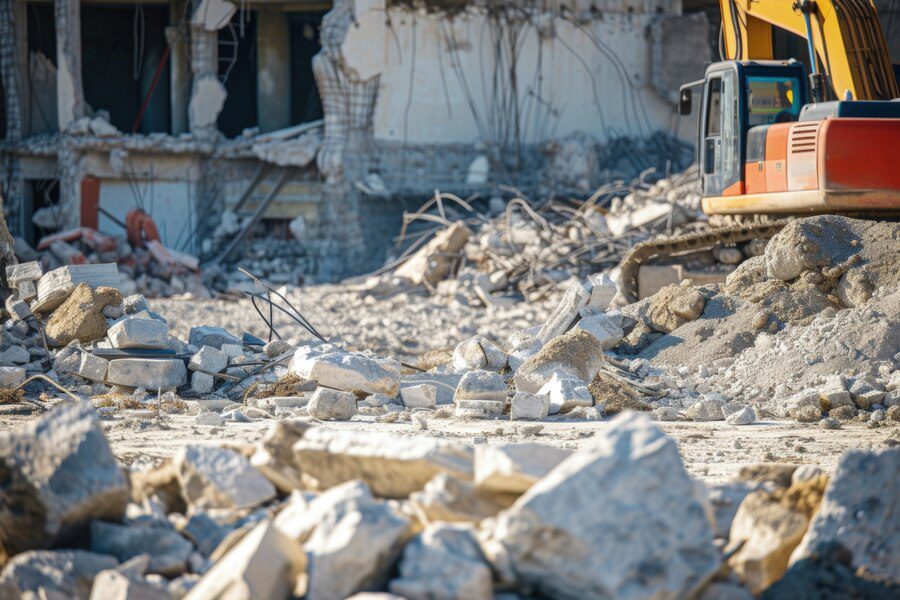The Ultimate Guide to Construction Waste Removal and Debris Disposal

When it comes to construction, renovation, or demolition projects, efficient construction debris removal
is crucial for maintaining a clean, safe, and environmentally responsible job site. Construction waste
management can be a complex task, especially when dealing with bulky materials like concrete, metal,
wood, and hazardous substances. The best way to get rid of construction debris is to partner with a
professional junk removal service like Provident Junk Removal Vancouver BC, which specializes in
renovation debris removal and demolition waste removal. Improper disposal can lead to serious
environmental and health risks, from soil contamination to water pollution, not to mention potential
legal penalties. By choosing an expert service, you ensure proper disposal practices, avoid costly fines,
and contribute to a cleaner, greener future. Let Provident Junk Removal handle your debris removal
needs so you can focus on what matters—completing your project efficiently and responsibly.
Understanding Construction Waste: What’s in Your Debris?
Construction and demolition (C&D) activities produce a wide variety of materials that can be difficult to
manage and dispose of properly. Construction waste removal involves dealing with large volumes of
debris, from leftover materials like wood, metal, and concrete, to hazardous substances like asbestos or
lead paint. Effective construction waste management is essential to ensure compliance with local
regulations, reduce environmental impact, and promote sustainability. Below, we’ll break down the
types of debris commonly generated during construction and demolition, the best practices for handling
them, and key considerations for getting rid of construction debris responsibly.
Types of Construction Waste and Debris:
Construction and demolition projects generate different types of debris, each with its own disposal
requirements. Here’s a breakdown of the most common materials:
| Waste Type | Common Examples | Disposal Requirements |
| General Construction Debris | Wood, metal, drywall, tiles, glass, plastic | Can be recycled or sent to landfills with proper sorting |
| Concrete and Asphalt | Concrete, cement, bricks, asphalt, rubble | Can be crushed and reused for road base, etc. |
| Hazardous Materials | Asbestos, treated wood, lead paint, house paints | Must be disposed of at licensed hazardous waste facilities |
| Demolition Debris | Old wood, insulation, plaster, plasterboard | Often recycled or repurposed for building materials |
| Packaging Waste | Cardboard, plastic wrap, strapping materials | Recycled or sent to landfill if non-recyclable |
| Electrical & Mechanical Waste | Appliances, HVAC units, wiring, pipes | Some can be recycled, others must be disposed of as e-waste |
Note: The waste generated will depend on the type and phase of construction, whether it’s new
construction, renovation, or demolition.
Best Practices for Construction Waste Removal and Demolition Debris Disposal:
Efficient construction waste removal goes beyond just hauling materials away. It involves proper sorting,
recycling, and disposal to minimize environmental impact. Here are the key best practices for managing
C&D waste:
1. Pre-Construction Planning:
Planning ahead is the first step to reducing construction waste. Strategies include:
- Accurate Material Ordering: Avoid over-ordering materials to prevent excess waste.
- Material Storage: Store materials properly to prevent weather damage.
- Deconstruction vs. Demolition: Consider deconstructing buildings instead of demolishing them to reuse materials.
2. Segregation of Waste:
Sorting waste on-site before removal is key. Group materials by type (wood, metal, concrete, hazardous
materials) to facilitate recycling and proper disposal.
3. Recycling and Repurposing:
Many construction materials can be recycled. For instance:
- Concrete can be crushed and used as aggregate for new projects.
- Wood can be repurposed for other construction or landscaping projects.
- Metals can be sold as scrap and reused in new manufacturing.
4. Hazardous Waste Handling:
Some materials, such as asbestos or treated wood, require special handling due to their environmental
and health risks. Always ensure hazardous materials are:
- Stored safely in designated, impermeable areas.
- Transported to certified hazardous waste disposal facilities.
5. Professional Construction Waste Disposal Services:
For larger or small projects, hiring a professional construction garbage removal company, like Provident
Junk Removal, ensures efficient waste sorting, safe disposal, and compliance with regulations. A
professional team is trained to handle hazardous materials and understands local disposal guidelines.
6. Ensure Compliance with Local Regulations:
In British Columbia, construction waste management and disposal are governed by provincial
laws to protect the environment and public health. Contractors and homeowners must adhere to
the Canadian Environmental Protection Act. For more detailed guidelines on construction
garbage disposal, refer to the Construction Waste Management Regulations.
Key Challenges in Construction Garbage Removal and Waste Disposal for Construction:
Construction waste removal isn’t always straightforward. There are several challenges that
companies face during disposal, including:
- Contamination of Materials: Materials like plastic or paint can be mixed with recyclable debris, making it harder to sort.
- Space Constraints: Limited space on job sites can make it difficult to store waste materials for sorting and recycling.
- Compliance: Adhering to local environmental laws and regulations, especially for hazardous waste, can be challenging without professional help.
By working with a professional waste removal service like Provident Junk Removal, you
mitigate these challenges and ensure a cleaner, more efficient construction process.
Conclusion: Streamline Your Construction Waste Management with Provident Junk Removal:
Managing construction debris can be overwhelming, but it’s a critical part of any project. Whether
you’re handling demolition debris disposal, building waste removal, or general construction waste
management, following best practices and working with a professional service ensures responsible,
efficient disposal. By partnering with Provident Junk Removal, you can rest assured that your
construction garbage removal will be handled quickly, safely, and in full compliance with local
environmental regulations.
For more information about construction waste removal and proper disposal practices in British
Columbia, check out the official Environmental Protection Guidelines. Get in touch with our expert team
today!



